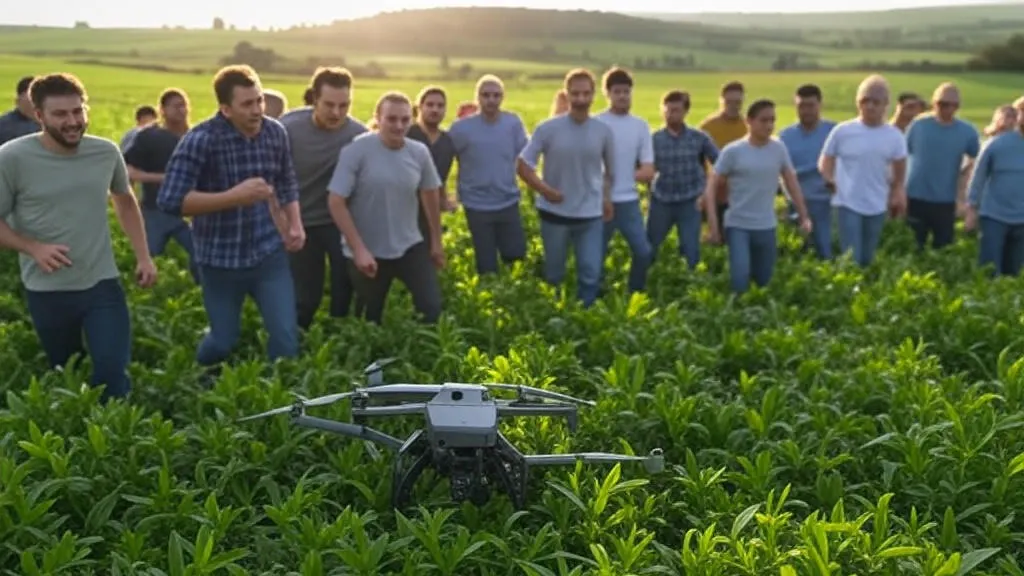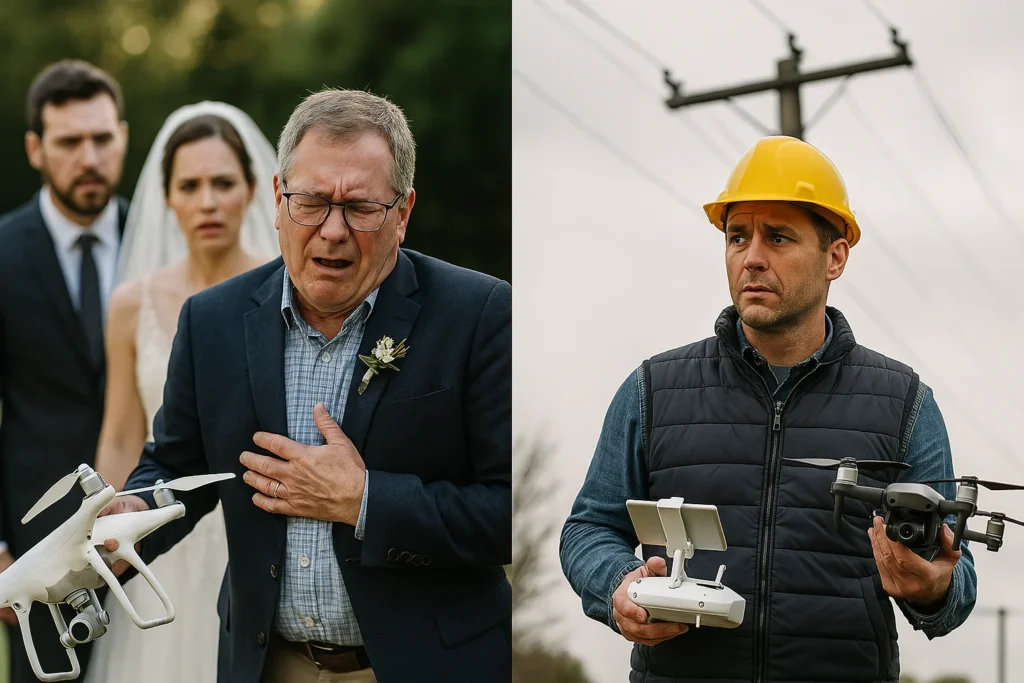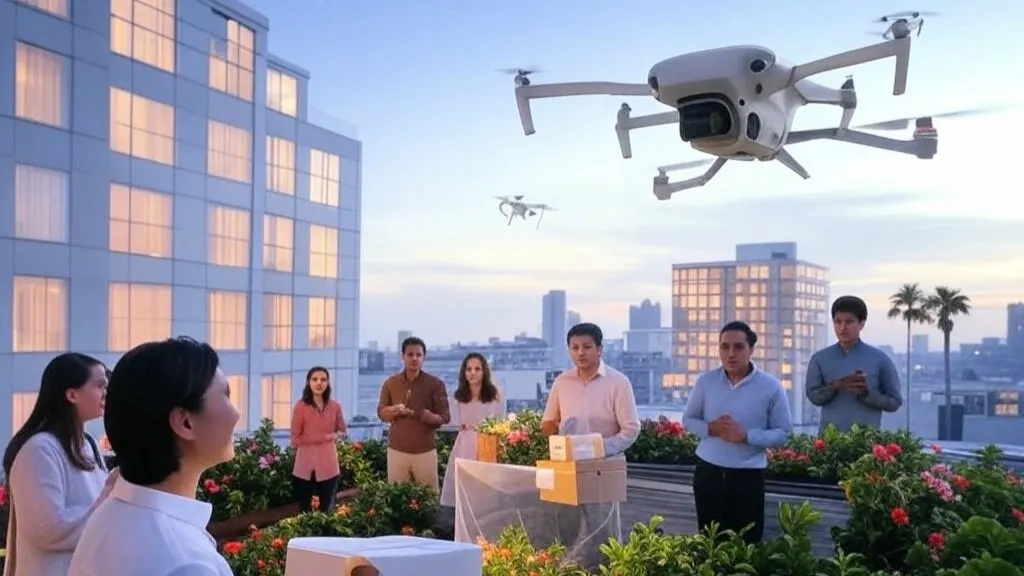Introduction:
Drone liability insurance is your safety net when things go wrong in the air. Whether you are a hobbyist capturing stunning aerial shots or a business owner using drones for work, this coverage protects you from the financial fallout of accidents. In this article, we are going to break down everything you need to know about drone liability insurance—why it matters, who needs it, what it covers, and how to get it.
We will explore the risks of flying without it, the legal side of things, and tips to keep your premiums low. By the end, you will have a clear picture of how this insurance keeps your wallet and peace of mind intact. Let’s take off into the world of drone coverage, with insights from experts like those at Investopedia to guide us!
Table of Contents
Why Drone Liability Insurance Matters
Let’s face it—drones are incredible, but they are not foolproof. One wrong move, a gust of wind, or a tech glitch, and your drone could crash into someone’s car or, worse, a person. That is where drone liability insurance steps in. It covers the costs if your drone causes damage to someone else’s property or injures someone. Without it, you are on the hook for repairs, medical bills, or even legal fees if someone sues you.
Think of it like car insurance for the sky. Even if you are a careful pilot, accidents happen. Maybe your drone clips a power line, or a kid runs into its path. Liability insurance ensures you are not left scrambling to pay out of pocket. Plus, it is not just about money—it is about peace of mind. Knowing you are covered lets you focus on flying, not fretting. Curious about other insurance types? Check out this guide on term life insurance for a broader perspective.

Who Needs Drone Liability Insurance?
So, who actually needs drone liability insurance? The short answer: almost anyone flying a drone. If you are a hobbyist buzzing around your backyard, it might not be legally required, but it is still a smart move. One crash into your neighbor’s window could change your mind fast. For commercial pilots—think photographers, surveyors, or delivery folks—it is often a must. Many countries, like the U.S. and UK, have rules that kick in depending on your drone’s weight or how you use it.
Businesses hiring drone operators usually demand proof of coverage too. Imagine you are filming a wedding, and your drone bonks the groom on the head. Without insurance, that is a lawsuit waiting to happen. Even if you are just flying for fun, some homeowners’ policies exclude drones, leaving you exposed. Drone liability insurance fills that gap, whether you are a pro or just love the hobby.
What Does Drone Liability Insurance Cover?
Now, let’s get into the nitty-gritty—what does drone liability insurance actually cover? At its core, it handles third-party claims. That means if your drone smashes someone’s windshield or knocks a cyclist off their bike, the insurance can pay for the damage or medical costs. It is not about fixing your drone—that is a different type of coverage called hull insurance—but about protecting others from your mishaps.
Some policies go further, covering things like privacy issues. Say your drone accidentally films someone sunbathing in their backyard, and they sue for invasion of privacy. Liability insurance could help with legal fees and settlements. It might even cover advertising claims, like if you use footage in a way that gets you in hot water. Every policy is different, so read the fine print. For more on business coverage, peek at this smart entrepreneur’s guide.

The Risks of Flying Without Coverage:
Flying without drone liability insurance is like walking a tightrope without a net—doable, but risky. If your drone causes trouble, you are personally responsible for every penny. A small crash could cost you hundreds in repairs, while a serious injury might run into the thousands, or more if lawyers get involved. In some places, skipping insurance could even break the law, landing you fines or bans.
Take this scenario: your drone loses signal and crashes into a busy street. Someone gets hurt, and suddenly you are facing a lawsuit. Without insurance, that is your savings on the line. Even minor incidents, like denting a car, can add up fast. The stakes are higher for businesses—clients might ditch you if you cannot show coverage. Drone liability insurance is your buffer against these headaches, keeping your finances and reputation safe.
Legal Requirements Around the World:
The rules for drone liability insurance vary depending on where you are. In the U.S., the Federal Aviation Administration (FAA) does not mandate it for recreational flyers, but commercial pilots often need it to meet client contracts or local laws. Over in the UK, if you are flying for work, you need third-party liability coverage that meets European Union standards—think protection against war, terrorism, and more.
In Canada, drones over a certain weight require insurance for any use, not just commercial. Germany and France follow similar EU rules, while Australia leaves it optional for hobbyists but pushes it for pros. Check your local aviation authority’s website—like the FAA or UK’s CAA—to know what applies to you. Drone liability insurance is not always a choice; sometimes it is the law. Want to compare this to car coverage? See this auto insurance guide.
How to Choose the Right Policy:
Picking the right drone liability insurance can feel overwhelming, but it does not have to be. Start by figuring out how you use your drone. Are you a weekend flyer or a full-time pro? Hobbyists might only need basic coverage, while businesses could want higher limits—say, a million or more—to handle bigger risks. Look at what is covered: property damage and bodily injury are standard, but extras like privacy or legal defense might matter too.
Next, shop around. Companies like SkyWatch ( one of the world’s leading geospatial data platform) or BWI offer flexible plans, from hourly to annual policies. Compare premiums, but do not skimp on coverage to save a buck—cheap can turn expensive if you are underinsured. Ask about discounts too; safe flying records or training might lower your rate. For more on picking plans, check out for well described health insurance tips page. Drone liability insurance should fit your needs like a glove.
Tips to Keep Your Premiums Low:
Nobody wants to overpay for drone liability insurance, right? Good news—there are ways to keep costs down without cutting corners. First, fly smart. Stick to open areas, avoid crowds, and follow local rules. A clean record with no crashes or claims can score you lower rates. Some insurers even reward safe pilots with discounts.
Training helps too. Taking a drone safety course—like those offered by the FAA or Drone U—shows you are serious about flying responsibly, which insurers love. Keep your gear in top shape with regular maintenance; a well-kept drone is less likely to malfunction. Bundle it with other policies, like home or business insurance, for a deal. For more cost-saving ideas, you may like to read about car insurance advice. With a little effort, your premiums can stay grounded.
Common Myths About Drone Insurance:
There are some big misconceptions floating around about drone liability insurance, so let’s clear the air. One myth: “My homeowners’ policy covers my drone.” Not always true—many exclude aircraft, including drones, leaving you unprotected. Another one: “I only need it if I fly commercially.” Wrong again—hobbyists can face lawsuits too, and insurance is your shield.
Some think, “It is too expensive,” but policies can start low, especially for occasional flyers. Or how about, “I am a great pilot, so I do not need it”? Even pros have accidents—weather, tech failures, or plain bad luck do not care about your skills. Drone liability insurance is not just for the clumsy; it is for anyone who flies. Busting these myths helps you see why coverage matters, no matter who you are.

Real-Life Examples of Drone Mishaps:
Let’s talk real stories to hammer home why drone liability insurance is a game-changer. Picture a wedding photographer whose drone veers off and smacks into the bride’s uncle. He is okay, but the medical bill and damaged camera gear? Ouch. Insurance covered it, saving the day—and the photographer’s bank account. Or consider a surveyor whose drone hit a power line, sparking a small outage. The utility company sued, but liability coverage handled the legal mess.
Then there is the hobbyist whose drone crashed into a parked car during a test flight. No injuries, but the dented hood cost a pretty penny—thankfully, insurance stepped in. These cases show how fast things can go sideways. Drone liability insurance turns potential disasters into manageable bumps. For more on financial protection, peek at our well researched retirement planning piece.
Conclusion:
We have covered a lot about drone liability insurance today—why it is a must-have, who needs it, what it protects, and how to snag the right policy. From dodging hefty bills after a crash to meeting legal or client demands, this coverage is your wingman in the sky. We also busted myths, shared tips to save money, and looked at real-life close calls that prove its worth. Whether you are flying for fun or profit, it keeps you safe from the unexpected.
Ready to take the next step? Check with your local aviation rules and start comparing policies today. Pair it with resources like Wikipedia’s drone page for extra know-how, and fly with confidence knowing you are covered. Got questions? Drop them below—we are here to help!
Disclaimer:
This article is all about giving you a solid rundown on drone liability insurance, but it is not legal or financial advice. We have pulled together info from trusted sources to help you understand your options, whether you are a hobbyist or a pro pilot. Rules and coverage can differ based on where you are, so always double-check with your local laws and an insurance expert before making decisions. Our goal is to inform, not to replace professional guidance. Fly safe and stay smart!
Data Sources:
We gathered insights for this article from a mix of high-quality, reputable sites to keep things accurate and helpful. Investopedia gave us a clear breakdown of insurance basics, while Wikipedia offered a broad look at drones and their uses. For a global take, EASA’s drone rules page from the European Union Aviation Safety Agency filled in legal details. We also leaned on industry blogs and insurance sites to round out the picture. These sources all boast high domain authority, ensuring you get reliable info to guide your drone insurance journey.
I create clear, insightful content on finance, insurance, and investing. I use original visuals made with AI tools like ChatGPT, Copilot, Groke3, Gemini, and Canva to ensure quality and authenticity. Before publishing, each article is carefully edited by a dedicated editor. Connect with me on LinkedIn for more updates and insights.
